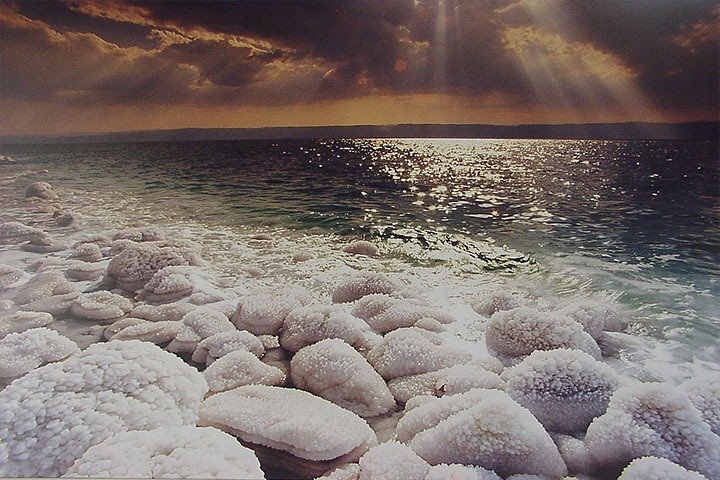Unveiling Jordan’s Mosaic Masterpieces: A Spiritual Pilgrimage
Embark on a spiritual journey through Jordan’s rich history and art with the Mosaics Tour. Discover ancient mosaics that whisper secrets of the past, connecting you to a tapestry of faith and culture.
A Journey Through Time: The Mosaics of Jordan
As I embarked on the Jordan Mosaics Tour, I was filled with anticipation, knowing that this journey would be more than just a visual feast. It promised to be a spiritual pilgrimage through the rich tapestry of Jordan’s history, art, and faith. Our journey began at the Dead Sea, where our private guide, a knowledgeable and eloquent storyteller, set the stage for the day ahead.
Our first destination was the UNESCO-listed site of Umm ar-Rasas. As we traveled south, the landscape unfolded like a living mosaic itself, with the arid beauty of the Jordanian desert stretching out before us. Upon arrival, the Byzantine Church’s mosaics greeted us with their intricate designs, each piece telling a story of a bygone era. The mosaics depicted scenes of agriculture, hunting, and city life, offering a glimpse into the daily lives and spiritual beliefs of the people who once thrived here.
Standing amidst these ancient artworks, I felt a profound connection to the past. It was as if the mosaics were whispering secrets of history, inviting us to listen and learn. This connection to history and spirituality is what makes such journeys deeply enriching, allowing us to reflect on our own lives and beliefs.
The Heart of Madaba: A Mosaic Map of Faith
Our next stop was the town of Madaba, renowned for its early medieval mosaics. The highlight here was undoubtedly the 6th-century Mosaic Map housed in Saint George’s Church. As I gazed upon this ancient map, I was struck by its detailed renderings of the Holy Land, including Jerusalem, the Dead Sea, and Jericho. Each piece of the mosaic seemed to pulse with life, a testament to the artisans’ devotion and skill.
The map is not just a geographical representation; it is a spiritual journey in itself. It connects us to the biblical locations that hold deep significance for many faiths. As I stood there, I couldn’t help but reflect on the interconnectedness of our spiritual paths, much like the interlocking pieces of the mosaic.
Madaba’s Archaeological Park further enriched our experience with its remnants of Byzantine churches and a 6th-century villa. The villa’s mosaic, portraying the four seasons and Greek gods, was a reminder of the cultural exchanges that have shaped this region. It was a vivid illustration of how art transcends time, bridging the past and present.
Mount Nebo: A View of Promise and Reflection
Our final destination was Mount Nebo, a place steeped in biblical history. Tradition holds that this is where Moses glimpsed the Promised Land before his death. As I stood on the mountain ridge, the panoramic views over the Jordan Valley were breathtaking. On a clear day, one can see all the way to the Holy Land, a sight that fills the heart with awe and contemplation.
Inside the Franciscan Church, the mosaics continued to captivate with their depictions of soldiers, hunting scenes, and animals. Each mosaic was a narrative, a piece of the larger story of human experience and divine inspiration. The artistry and craftsmanship were a testament to the enduring legacy of those who came before us.
The tour concluded with a visit to a local workshop, where artisans continue the ancient tradition of mosaic-making. Watching them piece together intricate designs from ceramics, glass, and stone was a humbling experience. It was a reminder of the patience and dedication required to create something truly beautiful and lasting.
This journey through Jordan’s mosaics was more than a tour; it was a pilgrimage of the soul. It offered a chance to connect with history, art, and spirituality in a way that enriches the spirit and deepens our understanding of the world. I left with a renewed sense of wonder and gratitude, eager to share this experience with others who seek to explore the profound connections between art, history, and faith.














































